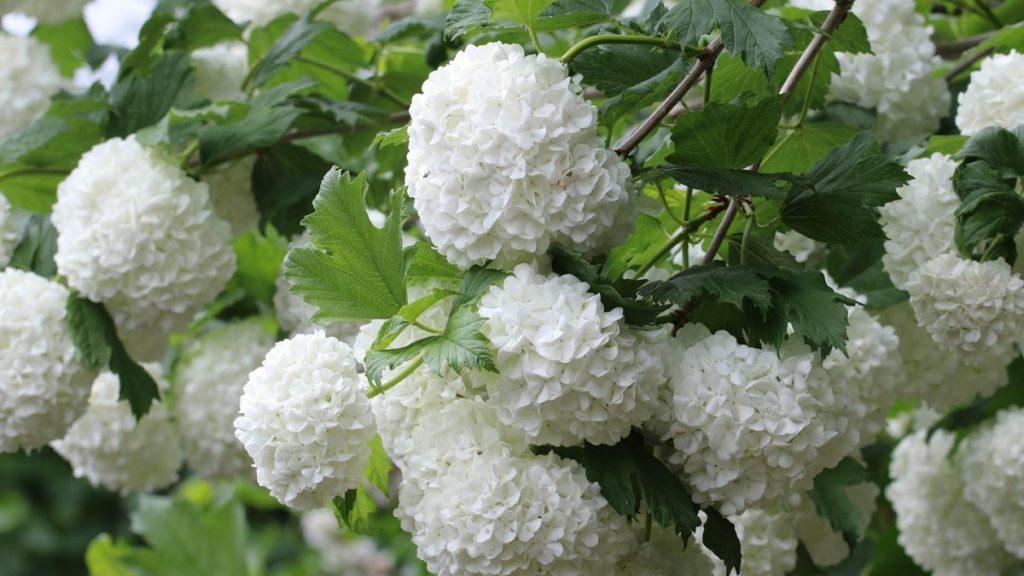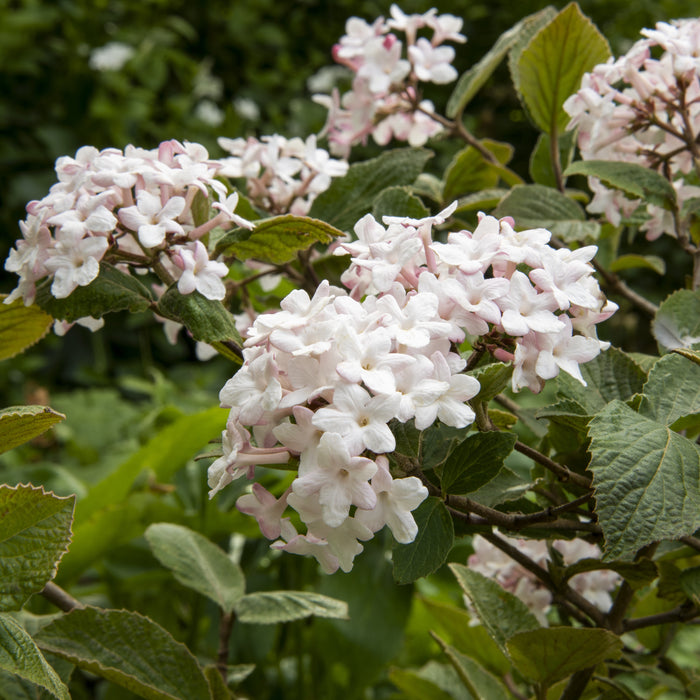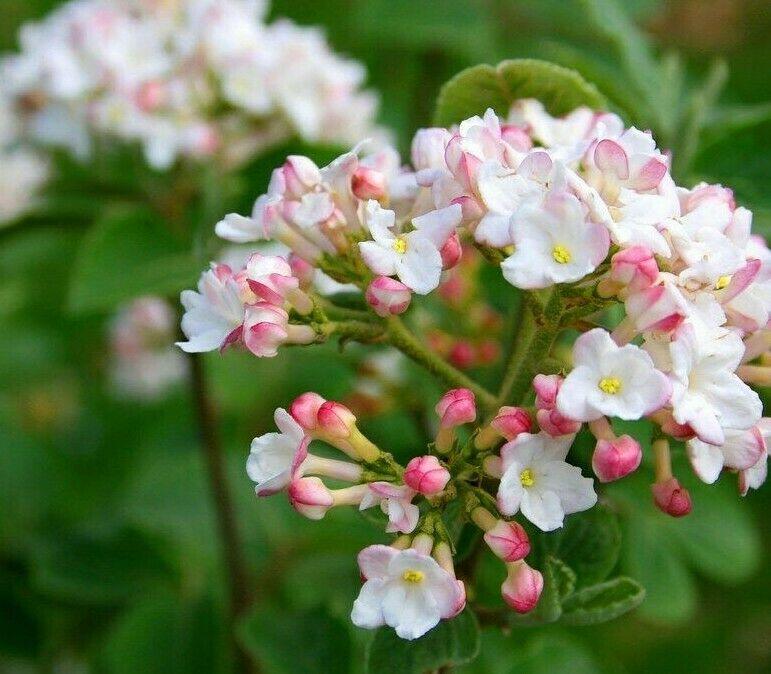Juddi Viburnum: The Easytogrow Shrub With Stunning Blooms
Juddi Viburnum: The Easy-to-Grow Shrub with Stunning Blooms
Introduction
Juddi viburnum is a beautiful and easy-to-grow shrub that is perfect for adding color to your garden. It blooms in the spring with clusters of white flowers that are sure to turn heads. Juddi viburnum is also a great choice for pollinators, as it attracts bees, butterflies, and hummingbirds.
In this blog post, we will discuss the benefits of growing Juddi viburnum, how to care for it, and some of the different varieties that are available. We will also provide some tips for planting and propagating Juddi viburnum.
Benefits of Growing Juddi Viburnum
There are many benefits to growing Juddi viburnum. Here are just a few:
- Easy to grow: Juddi viburnum is a very easy plant to grow. It is tolerant of a wide range of soil conditions and can withstand drought and heat.
- Beautiful blooms: Juddi viburnum blooms in the spring with clusters of white flowers that are sure to brighten up your garden. The flowers are fragrant and attract bees, butterflies, and hummingbirds.
- Pollinator-friendly: Juddi viburnum is a great choice for pollinators. The flowers are a valuable source of nectar and pollen for bees, butterflies, and hummingbirds.
- Drought-tolerant: Juddi viburnum is drought-tolerant. Once established, it can withstand periods of dry weather.
- Deer-resistant: Juddi viburnum is deer-resistant. This means that it is less likely to be eaten by deer than other plants.
How to Care for Juddi Viburnum
Juddi viburnum is a low-maintenance plant. However, there are a few things you can do to keep it healthy and looking its best.
- Water: Juddi viburnum needs regular watering, especially during the first year after planting. Once established, it can tolerate some drought.
- Fertilize: Juddi viburnum can be fertilized in the spring with a balanced fertilizer.
- Pruning: Juddi viburnum should be pruned in the spring after flowering. This will help to keep the plant healthy and encourage new growth.
Varieties of Juddi Viburnum
There are several different varieties of Juddi viburnum available. Some of the most popular varieties include:
- Juddi viburnum 'Nanum': This variety is a dwarf form of Juddi viburnum. It grows to a height of only 2-3 feet.
- Juddi viburnum 'Pink Beauty': This variety has pink flowers.
- Juddi viburnum 'Snowflake': This variety has white flowers with a pink blush.
Planting and Propagating Juddi Viburnum
Juddi viburnum can be planted in the spring or fall. It prefers a sunny location with well-drained soil. The planting hole should be twice as wide as the root ball. Backfill the hole with soil and water well.
Juddi viburnum can be propagated by cuttings. Take cuttings in the spring or summer from new growth. The cuttings should be 4-6 inches long and have at least two sets of leaves. Plant the cuttings in a well-drained potting mix and keep the soil moist. The cuttings will root in 4-6 weeks.
Conclusion
Juddi viburnum is a beautiful and easy-to-grow shrub that is perfect for adding color to your garden. It is a low-maintenance plant that is drought-tolerant and deer-resistant. There are several different varieties of Juddi viburnum available, so you can find one that is perfect for your garden.
To learn more about Juddi viburnum, visit Home Gardening. This website provides detailed information on the plant's care, propagation, and uses. You can also find photos and planting tips to help you get started with this beautiful shrub.
FAQ of juddi viburnum
- What is Juddi viburnum?
Juddi viburnum is a deciduous shrub that is native to North America. It is known for its fragrant white flowers, which bloom in late spring or early summer. Juddi viburnum can grow to be 6-8 feet tall and 6-10 feet wide. It is a relatively easy plant to care for and is tolerant of a variety of soil conditions.
- Is Juddi viburnum evergreen?
No, Juddi viburnum is not evergreen. It loses its leaves in the fall and winter.
- How do you care for a Juddi viburnum?
Juddi viburnum prefers full sun, but can tolerate part shade. It requires well-drained soil and benefits from a layer of mulch. Juddi viburnum should be watered regularly, especially during the first year after planting. It does not require much pruning, but you can remove dead or damaged branches in the spring.
- What are some common problems with Juddi viburnum?
Some common problems with Juddi viburnum include aphids, scale, and powdery mildew. These pests can be controlled with insecticidal soap or neem oil. Juddi viburnum is also susceptible to root rot, which can be caused by overwatering or poor drainage.
- Where can I buy Juddi viburnum?
Juddi viburnum is available at most garden centers. You can also find it online.
Image of juddi viburnum
10 different images of Juddi viburnum that are free to use:
- Juddi viburnum in full bloom. This image shows the plant's beautiful white flowers, which bloom in late spring or early summer.

- Juddi viburnum close-up. This image shows the plant's individual flowers in close-up. The flowers are small but very fragrant.

- Juddi viburnum in fall. This image shows the plant's foliage in fall, which turns a beautiful shade of red.

- Juddi viburnum in winter. This image shows the plant's bare branches in winter. The plant is still attractive in winter, even without its leaves.

- Juddi viburnum in a garden. This image shows the plant growing in a garden. The plant is a good choice for borders or hedges.

- Juddi viburnum in a pot. This image shows the plant growing in a pot. The plant can also be grown in containers, as long as it is given enough sunlight and water.

- Juddi viburnum with butterflies. This image shows the plant with butterflies. The plant's flowers are a favorite of butterflies, so you may see them visiting your plant often.

- Juddi viburnum with bees. This image shows the plant with bees. The plant's flowers are also a favorite of bees, so they will help to pollinate your plant.

- Juddi viburnum in a forest. This image shows the plant growing in a forest. The plant is a native of North America, so it is well-suited to growing in a woodland setting.

- Juddi viburnum in a meadow. This image shows the plant growing in a meadow. The plant is also a good choice for growing in open areas, such as meadows or fields.

Post a Comment for "Juddi Viburnum: The Easytogrow Shrub With Stunning Blooms"